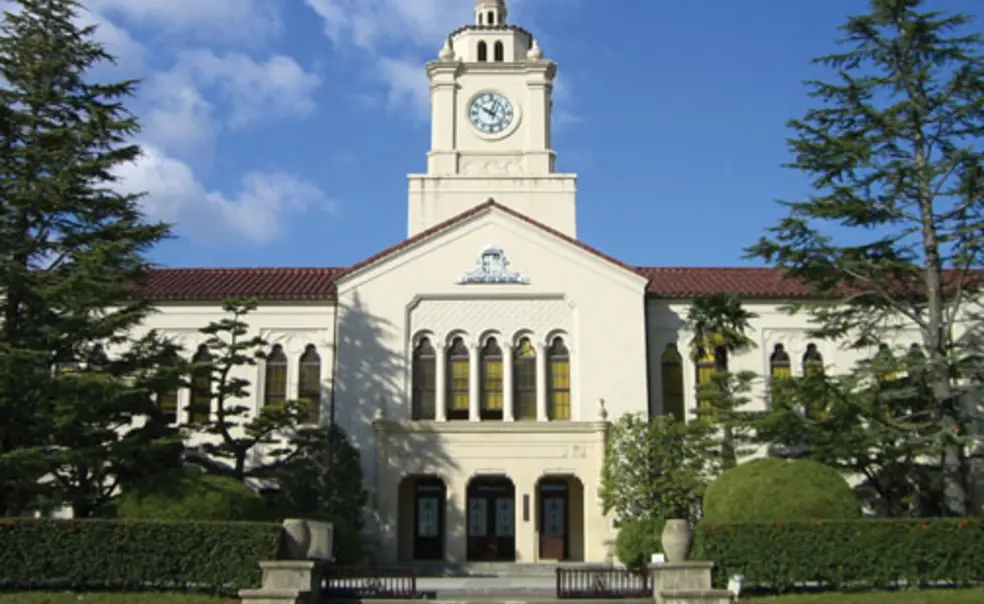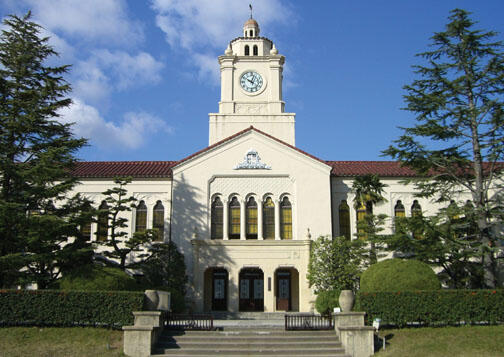If you ever attend an official ceremony at Kwansei Gakuin University, located on the main Japanese island of Honshu about halfway between Kobe and Osaka, you may find yourself humming along when they play the school song. The tune certainly will be familiar, and the first verse and chorus go like this:
Tune every heart and every voice,
Throw every care away,
Let all with one accord rejoice,
In praise of old Kwansei!
In praise of Kwansei Gakuin,
In praise of Old Kwansei;
Her sons will give, while they shall live,
Banzai banzai, Kwansei!
How Kwansei Gakuin chose “Old Nassau” for its own alma mater is not known, but finding out has become a pet cause of Herb Hobler ’44 since he was given a cassette recording of it last year by Jean Jansen, the widow of his classmate, Marius Jansen ’44, a longtime professor of Japanese history.
Jean Jansen says she does not know how her husband obtained the tape. Hobler has done some research of his own and communicated with the Kwansei Gakuin archivist. Like so
many things related to Princeton, the story seems to have a strong Woodrow Wilson 1879 component.
Kwansei Gakuin was founded in 1889 by an American missionary, W.R. Lambuth. Lambuth left after a year and his work was taken up by J.C.C. Newton, who later became the college’s third president. According to the Kwansei Gakuin website, Newton was well-loved by the Japanese students and “called them ‘Brother’ in a warm tone.”
Newton, a South Carolina native and former Confederate soldier, attended graduate school at Johns Hopkins in 1884–85, at the same time Wilson was there, and they both studied under historian Herbert Baxter Adams. Given the small size of the graduate student body and their common background as Southerners, Hobler suggests that Wilson and Newton may have become friends. Wilson also sang in the Hopkins glee club and, if he sang “Old Nassau,” Newton may have carried the tune with him when he later went to Japan.
“Old Kwansei” premiered in 1900, but Newton was in the United States at the time and did not hear it.
“Old Nassau” itself dates to 1859. The lyrics were written by Harlan Page Peck 1862 and, according to A Princeton Companion, students first tried to sing it to the tune of “Auld Lang Syne.” When that did not work, Karl A. Langlotz, a German instructor and campus choral director, penned the music.
Interestingly, “Old Kwansei” is sung only in English. There are a few variations in the lyrics, some of which, Hobler suggests, might have been made to remove English words that would be difficult for Japanese to pronounce. Although Kwansei Gakuin is a coeducational university, unlike Princeton it has not modified the lyrics to make them gender-inclusive.
Kwansei Gakuin is not the only Far Eastern university to have borrowed from the Princeton songbook. The school song of Silliman University in the Philippines, an adaptation of “The Orange and the Black,” was written in 1918 by Paul Doltz *1902, a Protestant missionary who served as the school’s vice president.













No responses yet